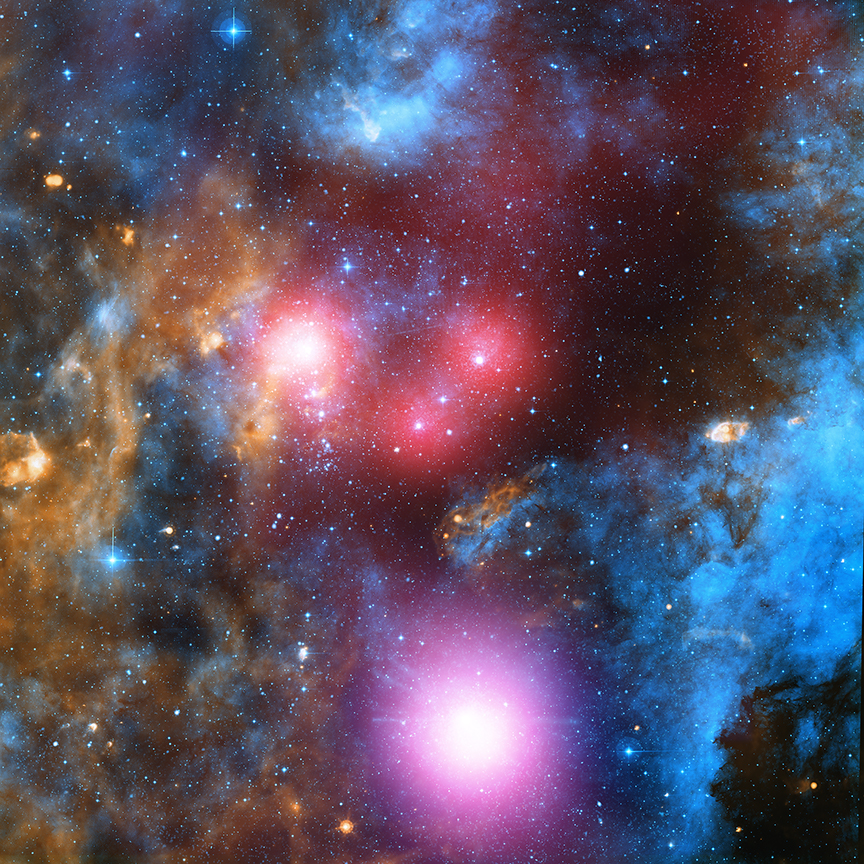The Cosmos with Cygnus OB2
X-ray & Radio Images of Cygnus OB2
Stars come in different sizes and masses. Our Sun is an average-sized star that will have a lifespan of some 10 billion years. More massive stars, like those found in Cygnus OB2, only last a few million years. During their lifetimes, they blast large amounts of high-energy winds into their surroundings. These violent winds can collide or produce shocks in the gas and dust around the stars, depositing large amounts of energy that produce X-ray emission that Chandra can detect. In this composite image of Cygnus OB2, X-rays from Chandra (red diffuse emission and blue point sources) are shown with optical data from the Isaac Newton Telescope (diffuse emission in light blue) and infrared data from the Spitzer Space Telescope (orange).
The region is approximately 1,400 parsecs from Earth in the constellation of Cygnus. The young cluster is one of the largest known and the largest in the northern hemisphere with some authors formerly classifying it as a young globular cluster similar to those in the Large Magellanic Cloud.
